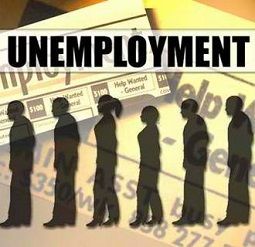CA workforce participation hits 38-year low

 The same state survey of labor statistics that led to headlines last week about California having its lowest unemployment rate in nearly six years also had some much less positive news.
The same state survey of labor statistics that led to headlines last week about California having its lowest unemployment rate in nearly six years also had some much less positive news.
The California Center for Jobs & the Economy noted these stats on Monday. The first:
“California’s Labor Force Participation Rate (not seasonally adjusted) in April 2014 was 61.8%, the lowest rate since April 1976. While the significant drop from March 2014 suggests there are also statistical or sampling issues in play, this milestone is a stark reminder that California’s participation rate remains below the US average (62.6%), and like the US rate is currently on a decline.
“This sustained decline in the labor force participation rate has been a statistical factor behind the improving unemployment numbers, but also reflects the perception of many potential job seekers on the opportunities available through the current economic mix.”
20.6% of those classified as CA employed work part-time
If less people seek work, that may help the unemployment rate improve, but it hardly bolsters the narrative of a state on the economic rebound. The Bay Area, Silicon Valley and the tech centers in Orange County, L.A. suburbs and San Diego are doing from pretty well to great, but the rest of the state never left the Great Recession.
The second stat cited by the jobs center also reflects the state’s overall economic weakness:
“While the US percentage of employed who work part-time has continued to slowly decline to 18.0% in April 2014 (12-month moving average), the comparable number for California has remained at 20.6% for the past quarter, reflecting the fact that this factor remained level at a somewhat higher rate throughout 2013 as well. The number of workers employed part-time for economic reasons also remains higher in California —7.2% for California vs. 5.2% for the US in April 2014.”
And this stat explains why California does badly in most revealing of official federal unemployment stats. It’s the U-6 category, which reflects how many people want to work full-time but can’t find such jobs.
The latest unemployment report from the U.S. Bureau of Labor Statistics came out in late April. It shows California to have the second-worst U-6 rate in the nation at 16.7 percent. Only Nevada is worse.
The newsroom version of sportswriters’ resistance to ‘Moneyball’
 The L.A. Times’ coverage did note that by the conventional measure of unemployment, California had the fourth-worst rate. But it and most other newspapers rarely talk about the state’s even worse U-6 rate. Dan Walters deserves credit for breaking with the crowd by doing so.
The L.A. Times’ coverage did note that by the conventional measure of unemployment, California had the fourth-worst rate. But it and most other newspapers rarely talk about the state’s even worse U-6 rate. Dan Walters deserves credit for breaking with the crowd by doing so.
And few journos outside of the Sacramento Bee and U-T San Diego cite how poorly California does in the alternative federal measure of poverty that is adjusted for cost of living.
When that is factored in, the Golden State has by far the highest poverty rate in the U.S. at around 23 percent. When we pretend the cost of housing is the same in California as it is in Indiana, CA’s poverty rate is about 16 percent, only 1 percent higher than the national average. So why is the former, misleading rate the one that’s most reported?
Inertia is the likely answer, not bias. But it’s not a good answer.
Hey, journalists of California: In covering the economy, why would you rely on the equivalent of batting average and ignore the equivalent of OPS and Wins Above Replacement?
When better statistical measurements come along, are veteran news reporters going to be like veteran sports reporters and resist them for no good reason?
When it comes to California’s poverty and unemployment rates, it sure seems that way.
Related Articles
AG Kamala Harris ensures she won't go down with bullet-train Titanic
The saga of the California bullet train took a twist on Friday that at first seems strange but at second
Santa Ana considers taxing … free Skype calls! Oh, the insanity
California is known as the world leader in lots of things — pop culture, technology and wacky lifestyles. Now the
Assembly Speaker limits press access
Jan. 8, 2013 By Katy Grimes As the new legislative session began yesterday, there was a quite buzz in the




